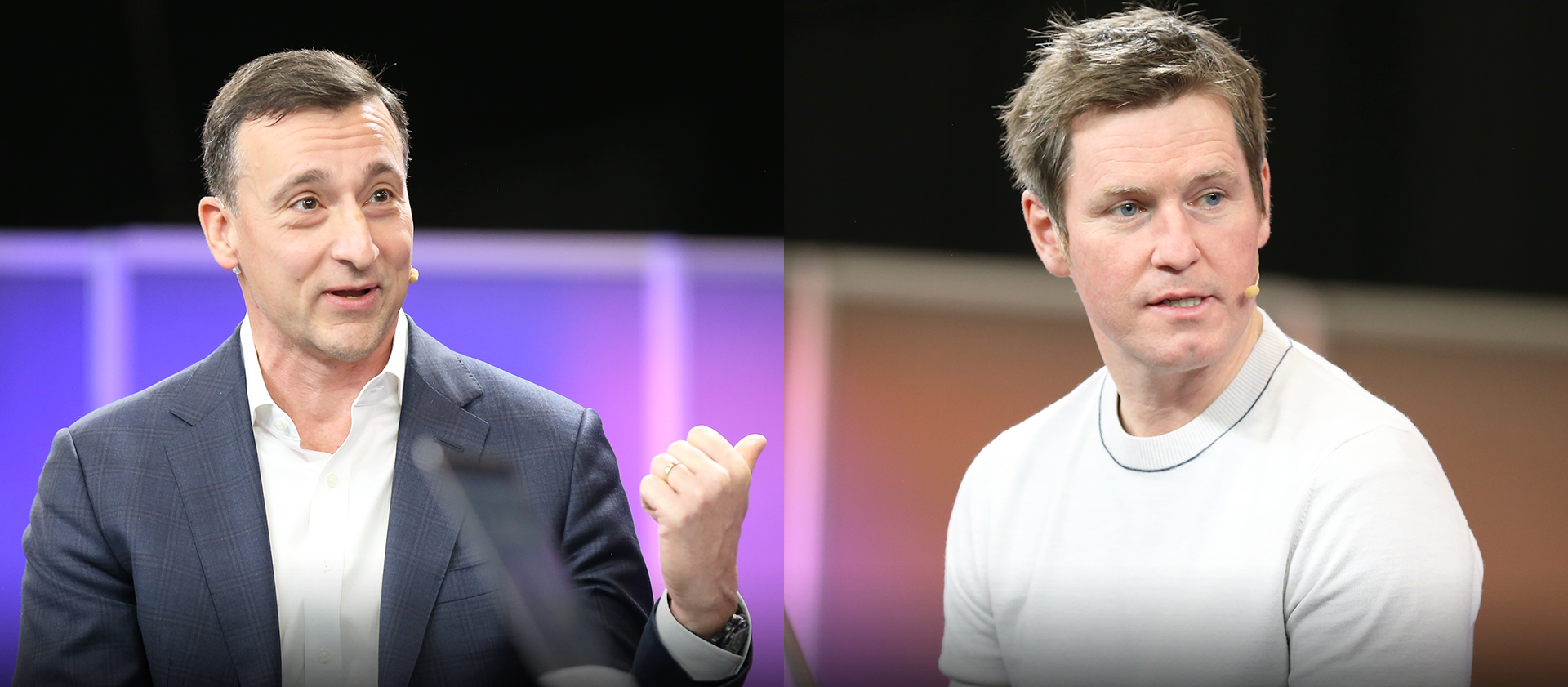 BIG DATA
BIG DATA
 BIG DATA
BIG DATA
 BIG DATA
BIG DATA
Spectator immersion, alongside play-along gamification and stats, are the key drivers behind sports’ adoption of digital, say executives running disruptive business models for professional sports leagues.
“We want to build systems using data and gamification where you can embed yourself and immerse yourself in the races,” said Rob Smedley (pictured right), director of data systems at Formula One World Championship Ltd.
“Avid fans really want to go deep,” added Dave Lehanski (pictured left), senior vice president of business development and global partnerships at the National Hockey League.
Both executives reckon there is no limit to fans’ appetite for data — something now being made available to them through the respective organizations’ cloud adoption.
Smedley and Lehanski spoke with John Furrier, host of theCUBE, SiliconANGLE Media’s livestreaming studio, during AWS re:Invent. They discussed the future of sports from a spectator’s angle. (* Disclosure below.)
Smedley and Lehanski both believe that the large amounts of data that are being more easily captured through use of cloud can revolutionize sport.
Indeed, things are rapidly changing. Volatility in the hockey sector, such as player changes during live play or the speed of the hockey puck — these are all data points that can now be visualized in real time through graphics and analytics delivered perhaps milliseconds after a game play. And the fans are lapping it up, according to Lehanski.
“Sport has sat still for a long time,” Smedley agreed, noting F1 spectators are also eager to adopt digital.
“You can set up your bespoke environment just as if you were a race engineer or a team strategist, and you can just get deeper and deeper,” added Smedley, referring to Formula One’s spectator-facing digital platform.
F1 probably has more data available to it than any other sport. Car telemetry, timings, images and their metadata, weather conditions, tire information, and the audio from the driver radios are all available for inserting into the customer experience.
New data streams are not just available to engage existing fans more; it’s also important to reach different demographics, according to Smedley.
“You can condense a one-hour-45 race down to five minutes, which is what they want,” he said, speaking of prospective younger fans who may never have gotten into traditional F1. “We’re trying to tell stories with the different data assets.”
Speed and pace of hockey play has also been a reason to adopt better data solutions, according to Lehanski.
“Stoppages are only a few seconds long. There’s not a lot of time to integrate data, to tell stories, to build graphics and visualizations,” he said.
However, fans are demanding more data stories. To that end, NHL built a tracking system capturing the position of the puck and players throughout the game. Video will ultimately be added, too, as it generates “a massive amount of new data,” Lehanski explained.
Adding augmented reality and virtual reality to the actual event, in real time, for the live spectator is something F1 is working on, including “across what’s going on on the track, like swapping out artificial intelligence in the cars in real time from the virtual pit,” Smedley said.
Here’s the complete video interview, part of SiliconANGLE’s and theCUBE’s coverage of AWS re:Invent. (* Disclosure: AWS sponsored this segment of theCUBE. Neither AWS nor other sponsors have editorial control over content on theCUBE or SiliconANGLE.)
THANK YOU